Do you spend hours looking for content inspiration, or even searching for a place to begin??
Facebook is currently one of the biggest players in digital advertising. No shocker there! That means your social media advertising is a key component to generating exposure for your brand.
“Based on the social media advertising statistics, it’s clear your competitors are investing in social advertising platforms. In terms of ROI, more than 95 percent of social media managers say Facebook offers the best return, followed by Twitter and Instagram.” – Hootsuite
It isn’t always easy to generate hype.
Knowing what to publish, when and where can greatly increase the visibility and reach of your social media content and we want to help you get there.
What is Social Media Production and Content Production: Meaning and Definition
Social media production refers to the entire process of creating, managing, and distributing content specifically designed for social media platforms. This comprehensive process encompasses everything from initial concept development and planning to the final publication and performance analysis of content across various social channels. Unlike traditional media production, social media production operates in a dynamic, fast-paced environment where content must be optimized for specific platforms, audience behaviors, and algorithmic preferences.
Content production in the social media context specifically refers to the creation of valuable, relevant, and consistent content assets designed to attract, engage, and convert a clearly defined audience. The meaning of content production extends beyond mere creation—it encompasses the strategic development of materials that serve specific marketing objectives while resonating with target audiences. This includes producing various content types such as images, videos, blog posts, infographics, stories, and interactive elements that collectively form a brand’s social media presence.
Social content production, a term often used interchangeably with social media content production, focuses on creating content that facilitates social interactions, sharing, and community building. The key distinction of social content is its inherent ability to generate conversations, foster relationships, and encourage audience participation. Effective social content production requires understanding not just what content to create, but how that content will travel through social networks and stimulate engagement.
The fundamental meaning behind all these production processes is transformation—converting strategic marketing objectives into tangible content assets that connect with audiences. At its core, content production for social media represents the bridge between brand messaging and audience engagement, requiring both creative expertise and analytical thinking to execute effectively.
The Evolution of Social Media Production
Social media production has evolved dramatically since the early days of platforms like Facebook and Twitter. Initially, brands approached social media with a casual, experimental mindset, often repurposing traditional marketing materials for social channels. Today, social media production has matured into a sophisticated discipline with specialized roles, workflows, and technologies.
The evolution has been driven by several factors: increasing platform complexity, changing user behaviors, algorithm refinements, and the professionalization of social media marketing. Modern social media production now typically involves cross-functional teams including strategists, content creators, designers, videographers, community managers, and data analysts working in coordinated workflows to produce cohesive content experiences.
As platforms continue to introduce new features and formats—from Stories to Reels to live audio rooms—social media production processes must constantly adapt. This evolution has transformed what was once an afterthought in marketing departments into a central, resource-intensive operation for brands seeking to maintain relevance in digital spaces.
Ready to speed up your social media content production process and take your results to the next level?
Check out these53 tricks of the trade to boost the engagement on your social platforms!
Tailored Social Media Proposal
That Drives Results.
Social Content Production vs. Traditional Content Creation
Social content production differs fundamentally from traditional content creation in several important ways. While traditional content often aims for polished perfection and follows rigid publishing schedules, social content thrives on authenticity, timeliness, and interactive elements that encourage audience participation. This distinction is crucial for brands transitioning from conventional marketing approaches to effective social media strategies.
The production cycle for social content is typically much faster than traditional media. Where traditional content might go through weeks or months of development, approval, and distribution, social content often needs to be conceptualized, created, and published within days or even hours to remain relevant to current conversations. This compressed timeline requires streamlined workflows, agile approval processes, and tools specifically designed for rapid content production.
Social content production also places greater emphasis on adaptability and iteration. Unlike traditional content that remains static after publication, social content can and should evolve based on audience response. This might involve adjusting messaging, testing different visual elements, or pivoting content direction based on performance metrics and community feedback.
The measurement framework for social content production also differs significantly. While traditional content might be evaluated primarily on reach or impression metrics, social content success depends on engagement metrics like comments, shares, saves, and the quality of conversation generated. This requires social content producers to develop content specifically designed to encourage these interactive behaviors.
Audience-Centric Production Approach
Successful social content production adopts an audience-centric approach that prioritizes the interests, behaviors, and preferences of the target community. This contrasts with brand-centric approaches that focus primarily on communicating company messages regardless of audience receptivity.
In practice, this means social content production begins with audience insights rather than brand messaging. Content producers analyze conversation trends, engagement patterns, and audience feedback to identify topics and formats that will resonate before developing content. This approach often results in content that may seem tangentially related to products or services but strongly connects with audience interests.
The audience-centric production model also emphasizes creating content that serves specific audience needs—whether educational, inspirational, entertaining, or practical. By focusing first on providing value to the audience, brands can build the trust and attention necessary for more direct marketing messages to be received positively.
Platform-Specific Production Considerations
Effective social content production requires tailoring content to the unique environment of each platform rather than creating generic content for cross-posting. Each social platform has distinct audience expectations, content formats, and algorithmic preferences that must inform the production process.
For instance, production for TikTok might prioritize trend participation, authentic moments, and creative editing techniques, while LinkedIn content production would emphasize professional insights, data visualization, and thought leadership positioning. These platform-specific considerations affect everything from content planning and resource allocation to shooting specifications and post-production techniques.
The most sophisticated social media teams develop platform-specific production workflows that account for these differences while maintaining consistent brand positioning across channels. This might include creating content variants from the same core concept but adapting format, pacing, framing, and messaging to suit each platform’s unique environment.
How to Create Great Content
Creating epic content is not necessarily easy, but it doesn’t have to be as difficult as it might sound.
By implementing particular tools like Canva and making sure you’re staying relevant in terms of your brand and audience, you can simplify and even streamline the social media content production process using the information we’re going to provide below.
Get your notebook ready, because here we go!
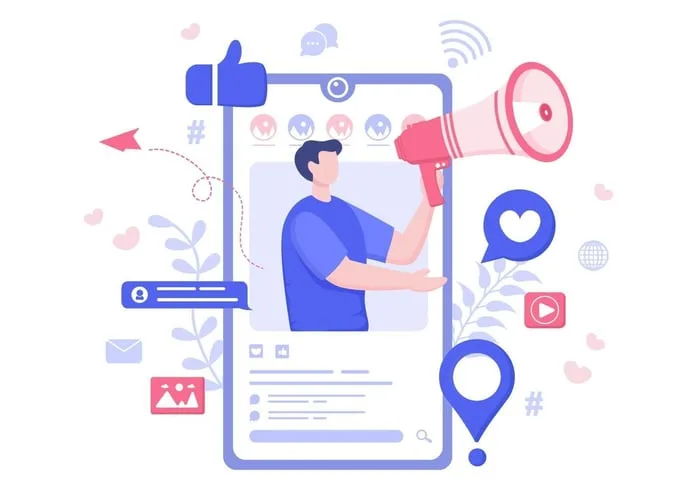
Leverage Social Media Marketing To Connect With Your Audience.
We’d love to hear about your organization’s goals for your project on social media.
REQUEST PROPOSAL
Brainstorming Techniques
- Find inspiration
- Focus
- Changing perspective
1. Find inspiration
My favorite way to find inspiration is scrolling through multiple social media platforms that are different from the platform I am looking to get content for, and by auditing what other similar brands are doing. You don’t want to copy what they are doing but you should be aware of your competition and current trends that are happening. The inspiration from someone else can be twisted and made your own to make something great.
2. Focus
This brainstorm tactic is best when you are stressed and have tons of things on your to-do list. Focus your mind and organize what you need into sections. Come up with ideas by section and move on after a certain amount of time.
Jot down any words that you think of for a period of time. Do this at any time (middle of the night, when you leave the gym, while you’re doing another project) write down everything that could be a good idea or even seems a little too crazy. In the midst of the days, you may have a really great brand new idea.
3. Changing Perspective
Another brainstorming tactic is to come up with an idea, then question other ways it can be used. This is all about changing your perspective. How can one idea be branched into many different unique ideas.
Social Media Content Production Resources
1. 20% Checker Tool
We all know the amount of text in your posts matters when you’re putting money behind them. This tool checks to make sure you have minimal text to ensure your ad reaches your entire potential audience.

2. Creative Hub
Facebook’s Creative Hub is the easiest way to create examples of ads or posts and test how they look on any device. “Get Inspired and explore the possibilities.” You can share these mockups with clients, or use them for cross-collaboration with your team!

3. Grammarly
Grammarly is a grammar check tool to make sure everything you write is mistake free. This is an effective tool to make sure your content is not sloppy!

4. Feedly
Feedly is a great way to find curated content that pertains to your business. All of the information you find can be easily organized and shared with your audience.
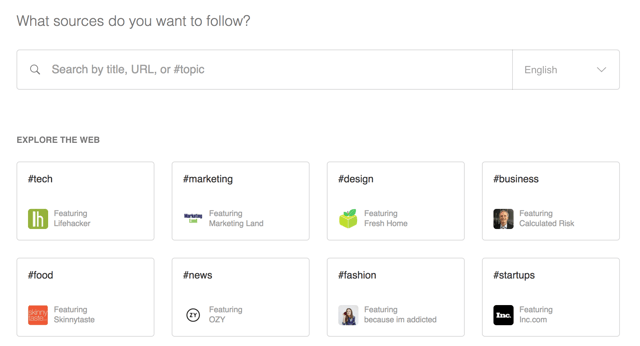
4. Hubspot Blog Topic Generator
Sometimes you hit a slump when writing a blog, and that’s okay. HubSpot has a Blog Topic Generator to make sure you never run out of blog ideas. All you have to do is enter 3 nouns and the generator will come up with topic inspo.
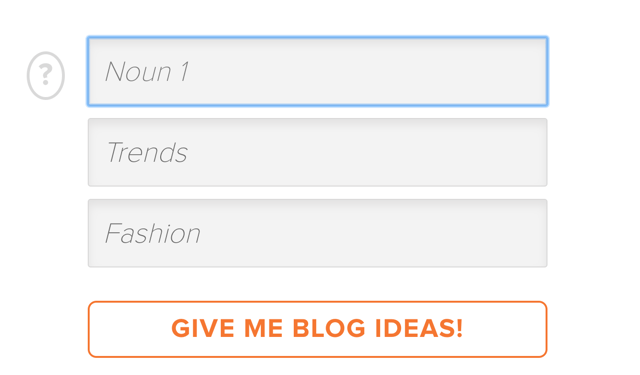
5. BuzzSumo
BuzzSumo allows you to see the most shared content for any topic and any site. BuzzSumo also helps find influencers that could potentially boost your brand.
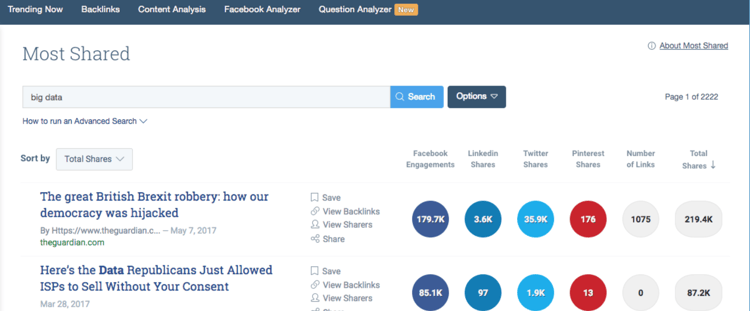
6. Unsplash
Unsplash is a go-to for free high quality images from talented artists. Download and use throughout your social media content, but make sure to give credit where it is due!
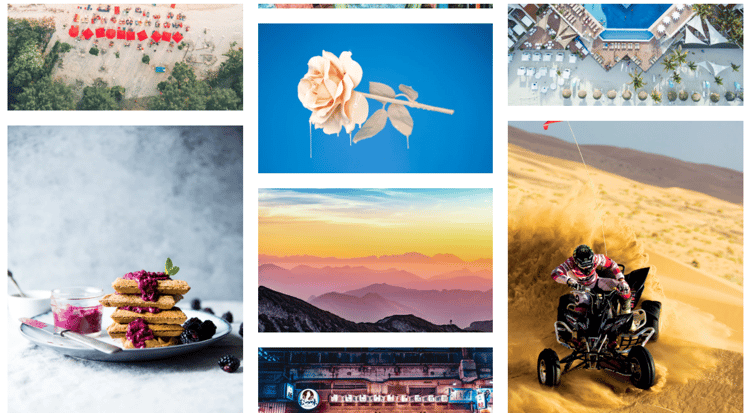
7. Pexels
Another free image site is called Pexels. You can download free images to use or you can upload your images for others to use. This is a great tool to find high quality images for social content.

Best Social Media Content Production Tools
1. Canva
Design presentations, social media graphics, and more with thousands of beautiful layouts! Design with millions of stock photographs, vectors and illustrations. You can even upload your own. Edit your photos using preset filters or get advanced with photo editing tools, you’ll never be stuck for choice. Use icons, shapes and elements with ease. Choose from thousands of elements for your designs, or upload your own. Access a great selection of fonts perfect for every design. All ready to go and accessible within Canva.
2. Adobe Suite
Creative Cloud gives you the entire collection of Adobe desktop and mobile apps, from essentials like Photoshop to innovative new tools like Adobe XD (Beta). You also get built-in templates to jump-start your designs and step-by-step tutorials to sharpen your skills and get up to speed quickly. It’s your entire creative world, all in one place.
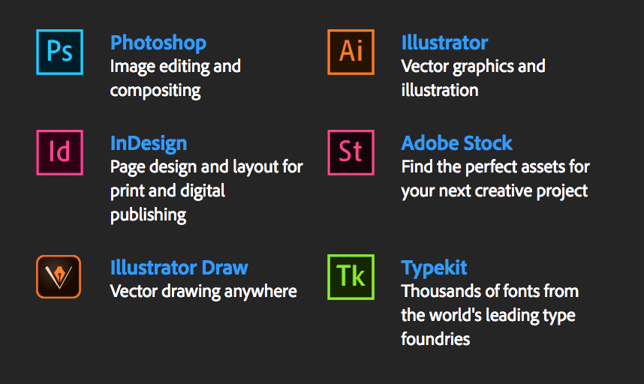
3. Ripl
“A Marketing Team in Your Pocket!” Create eye-catching animated videos and share them on Facebook, Twitter & Instagram with one tap. Add photos and/or text to include in your post, choose a design and customize the style, Write a caption, add hashtags, and share with Ripl!

4. Plotagraph
Plotagraph is a one of a kind image animation app that brings photos to life. Tell your story in a fun and unique way with animated images that can now be shared on most of your favorite social media platforms as a looping video or Animated PNG. This new and innovative app gives you the tools to easily animate any image in minutes.

5. Pixlr
Pixlr is a fun and powerful photo editor that lets you quickly crop, rotate, and fine-tune any picture, free. Their most popular free web-based photo editor makes editing photos easy. Apply quick fixes, overlays, filters, and stickers to make any photo beautiful.
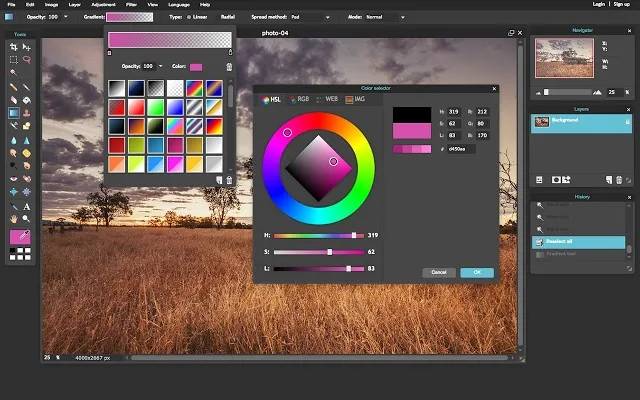
6. Boomerang
Boomerang takes a burst of photos and stitches them together into a high-quality mini video that plays forward and backward. Shoot in portrait or landscape.
Boomerang from Instagram makes everyday moments fun and unexpected. Create captivating mini videos that loop back and forth, then share them with your friends.
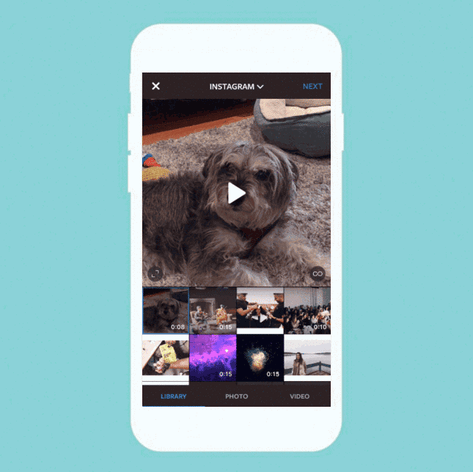
7. Giphy
GIPHY is your top source for the best & newest GIFs & Animated Stickers online. Find everything from funny GIFs, reaction GIFs, unique GIFs and more. Now creating GIFs is fast, easy, and fun! You can add multiple images to create a GIF slideshow or trim your video into a GIF then add captions or stickers.
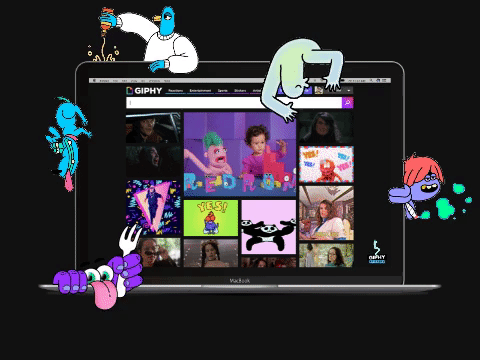
8. Gifs.com
Another GIF site to use is gifs.com, they are one of the fastest ways to create animated gifs from Youtube, Facebook, Vimeo and other video sites. Just upload your own video or paste in a URL and click upload!

9. Piktochart
Take your visual communication to the next level, without hiring a professional designer. Piktochart is an easy infographic design app that requires very little effort to produce beautiful, high quality graphics. Make your own infographics here!
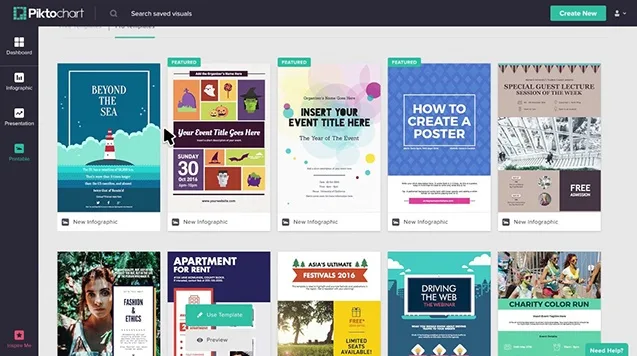
10. Prezi
Prezi is everything you need for your most dynamic and engaging presentations ever. Use motion, zoom, and spatial relationships to bring your ideas to life and become a great presenter!
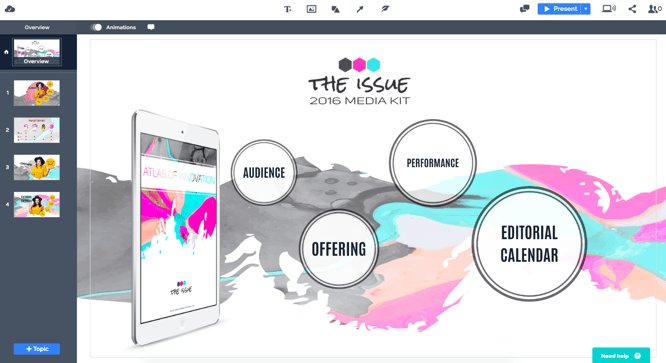
11. VSCO
VSCO® is an art and technology company empowering and inspiring people everywhere to create, discover, and connect. VSCO is a powerful collection of film and mobile emulation tools that work within Adobe Lightroom and Adobe Camera Raw to deliver beautiful results and a streamlined workflow through simple presets and custom profiles.
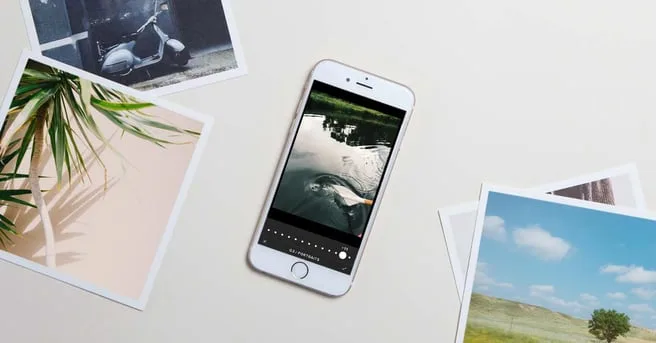
12. Over
With Over, choose from millions of images, graphics and fonts to overlay, add and edit text and design photos to boost your social media profile right from your smart phone or tablet!
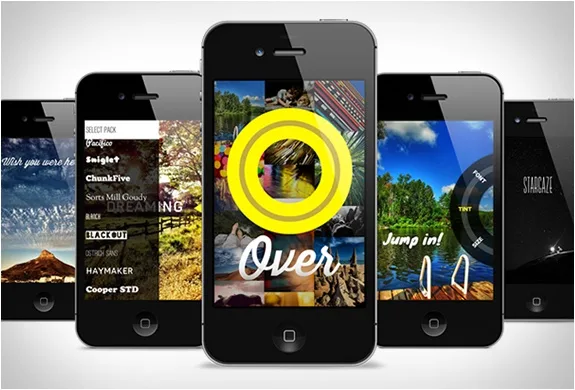
13. Snapseed
Snapseed is a complete and professional photo editor developed by Google. This tool has 29 Tools and Filters, including: Healing, Brush, Structure, HDR and Perspective!
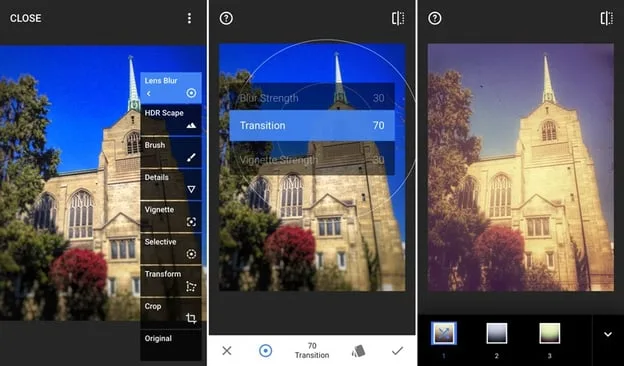
14. Visme
Engage your audience with powerful visual stories. Create stunning presentations, infographics and other visual content in minutes. Tell better stories and translate boring data into beautiful visuals right in your browser. Share or download using Visme’s all-in-one easy-to-use editor!
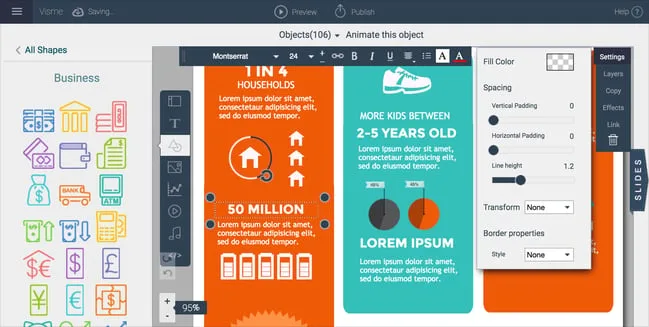
15. Repost
Repost for Instagram makes it easy to #Repost your favorite photos & videos on Instagram while giving credit to the original Instagramer.
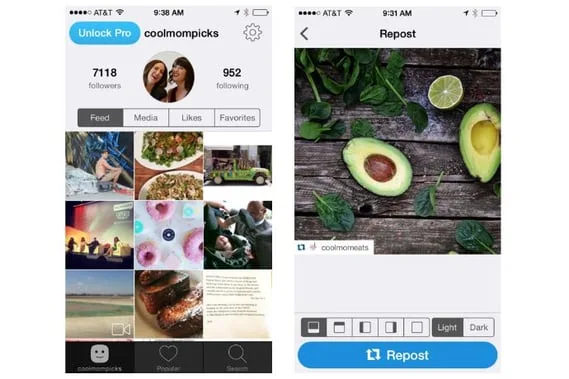
Social Media Content Production: Storage
Storing content can be an annoying for content producers, but luckily technology has helped storing become more convenient than ever. Companies like Google have made it easier to store and access content for the greater good of people who are always hitting save and on-the-go.
1. Google Drive
Google Drive is a great tool for storing files that are not necessary images. Files such as adobe suite files (.psd, .ai, .id, etc.) For documents that are heavy in writing, google docs is a great storage tool to collect word type documents and it makes it easy to collaborate with sharing options.
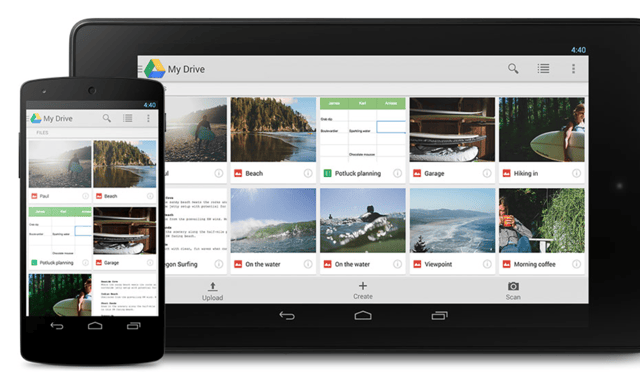
2. Google Photos
Google Photos is a great photo storage tool for photographers and designers. Photos helps cut down the hassle of storing raw and edited photos. With sharable links, photographers are able to allow access to albums, and viewers can download duplicates of that photo. This keeps the process of photo shoots from start to finish fluid.
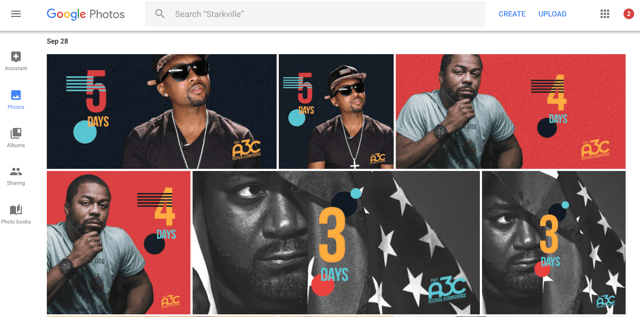
3. Dropbox
The infamous Dropbox tool is still a go-to storage software. Similar to Google Drive and Photos, users are able to purchase storage and upload files of all types and make them shareable for users to send, collect, and download.
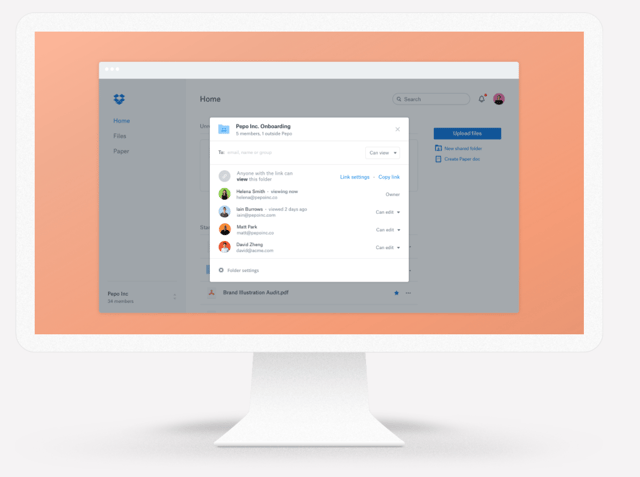
Social Media Content Production: Original Or Curated Content?
Content has multiple faces. While content is still content, it can labeled as original or curated. Original content pieces can be a photograph you’ve taken, a graphic that you’ve created, or blog that you’ve written around an idea. Although original can be very subjective, you can look at as ‘from the soil’ (from scratch).
Curated content is content that is COLLECTED that is around a certain thought or topic. For example, Instagram’s @logo_inspiration collects some of the most well designed, impressive logos and reposts them for the designer’s exposure along with theirs. Curators may not be able to actually produce some the content that they collect but it can label them as connoisseurs and/or thought leaders.
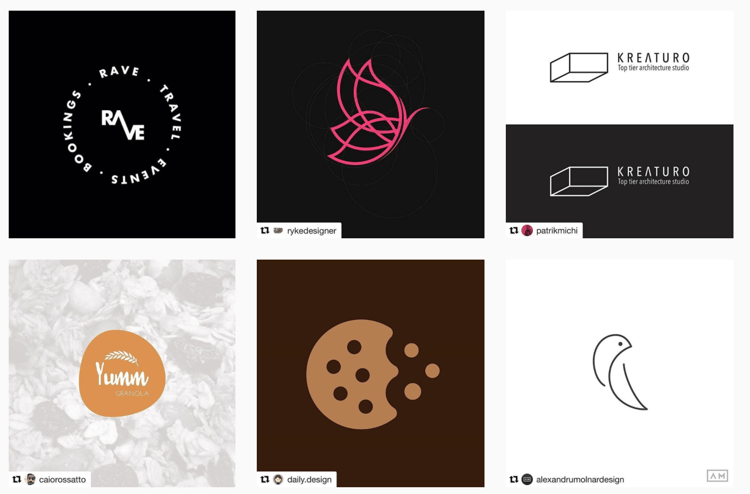
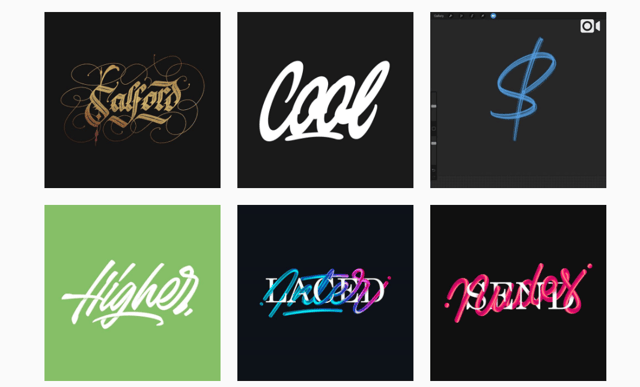
Social Media and Social Content Production Guidelines
For social media, visual content has some rules that put in place by the platform itself and some that are not even written down (a.k.a. principles). Facebook for example, requires less than 20% text on post. If the post has more than 20%, they limit the amount of reach that post will have if you decide to promote or ‘boost’ that post. Seems like a lot of viewers are not fans of typography. This rule applies to Instagram as well.
Size is another issue that producers have to keep in mind. Each platform has recommended pixel sizes that frame your content into timeline posts, ads, banners, etc. Nowadays, social platforms are making it more flexible to allow a range of sizes for post. For the best results, Facebook suggests that post be 940px x 788px and 1200px x 628px for ads while Instagram prefers more of a box that’s 1080×1080 or in that ratio. Facebook and Linkedin share a similar pixel size when it comes to ads being 1200px x 627px vs 628px. Twitter is a little more flexible when it comes to sizes because visual post open up on pop up window once tapped. The framing of the post is what producers should keep in mind. Understanding this helps producers know what the ‘scroller’ would be seeing.
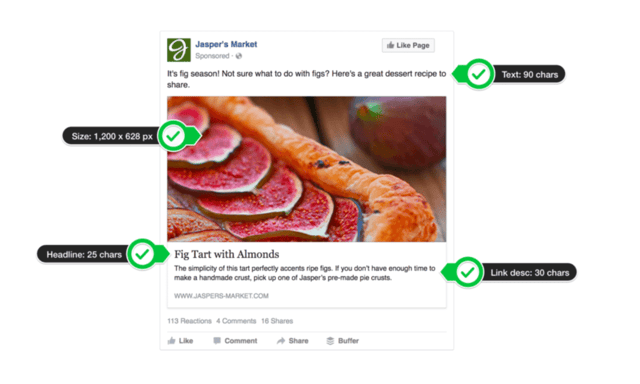
image via Buffer Social
Platforms like Snapchat keeps their sizes to the ratio of a smartphone for the best results. Wider photos will be at risk to being cutoff or shrunken. Same for Instagram & Facebook stories.
Framing on Instagram is an unwritten rule for most designers some producers. Making your profile easier to look when someone is looking you up. Understanding framing sizes helps you understand the placement of your next post. For example, lettering artist @stebradbury uses spacing to help his viewers eyes taken in his feed. Notice how he doesn’t have the subject of his post exceed the edge? This allows breathing room between each post. See below.

Types of Social Media Content
- Graphics
- Photography
- Gifs
- Videos
- Blogs
1. Graphics
The label graphics is an umbrella for the type of content that can be made. Graphics are in a realm of illustrations, vectors, typography, motion, photo manipulation etc. Graphics tend to have a flat look that manipulates the eye to show depth (in some cases.)
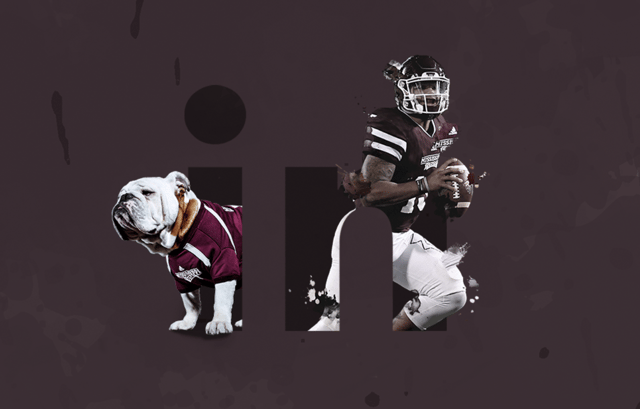
2. Photography
Photo content is the most popular type of content for platforms such as Instagram and Facebook. Photography doesn’t always fall under ‘professional’. Selfies and food pics fall into the photo realm also. Do you have an issue making subjects feel comfortable in front of the camera? Check out this guide!
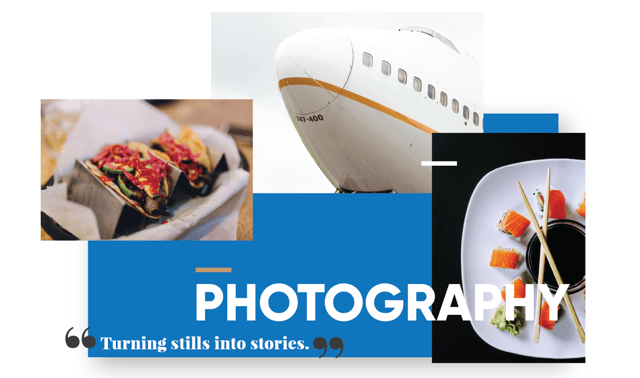
3. Gifs
Now an increasingly popular piece of content, gifs are now catching the attention of scrollers more than ever. Gifs are pieces of content that can exaggerate a thought or feeling. Most are curated from movies, shows, video games, and other cinematic sources. Being more accessible and easier to make, conversations without gifs are becoming slim. Gifs are not always created using reality. Motion designers create gifs to show a short animation. See example here.

4. Videos
Videos are vital, attention grabbing pieces of content. There are many options for video content: how-to, promotional, graphic, and obviously cat videos. More people on social media engage with video more than any other piece of content. Not all video needs a professional camera man or director. Majority of the social platforms allow you to be the director, editor and producer. Instagram allows you record videos straight from the platform and/or go live along with Facebook.
5. Blogs
Blogs are essential pieces of content to show expertise on a certain subject or topic, and allows writers to document their experiences in another capacity. Blogs are vital for people who want to drive traffic to their site through backlinks and direct traffic.
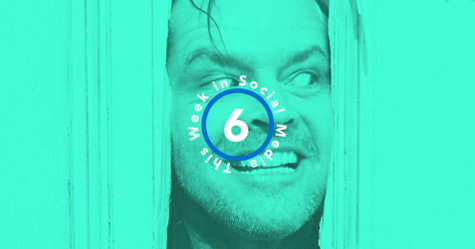
Creating Social Content Pillars
It’s one thing to just post a picture of your product, it’s another to have a wave of content across different themes that align with the same goal. What are some content pillar examples you ask? Culture. Direct Sales. Humorous. Thought Leadership. Educational. It’s endless. Having multiple pillars allows your brand to potentially reach, connect and engage with each and every one of your fans.
What Would Some of These Content Pillars Look Like?
1. Culture

2. Direct Sales
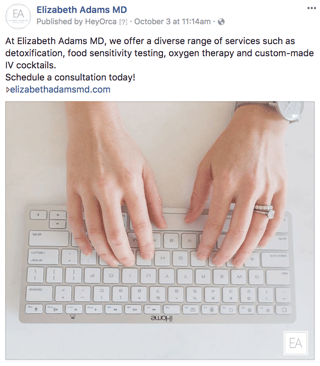
3. Humorous
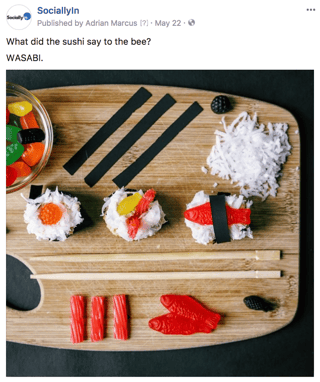
4. Educational
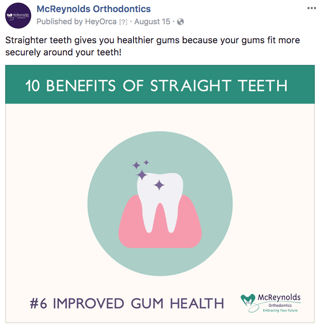
Social Media Content Production: Platform Specific Content
1. Facebook
A platform that your mom once wouldn’t dare touch, now accounts for nearly a third of the world! It is now home to grandparents, little cousins & everyone in between. No matter how much you want to “stop using Facebook,” it always seems to be one of your most used apps on your phone. Its front end is as easy as it comes for first-time users just starting their small business to dive into the social world. Facebook’s backend (Power Editor) is intricate and provides businesses that have made social a priority endless possibilities for reaching their potential customers.
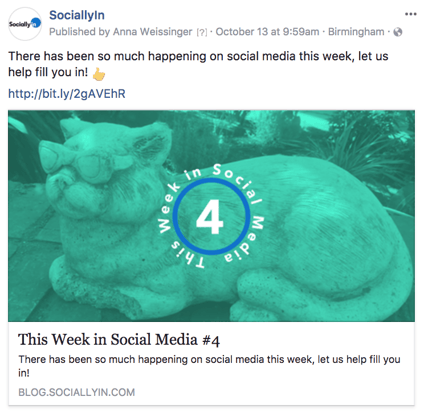
2. Instagram
If a picture says 1000 words then Instagram says over 60,000,000 every single day. There will never be a day that you run out of pictures, videos, gifs or memes. There is a profile to follow for any type of mood you’re in. Looking to laugh, Meet @marniethedog! How about some Monday morning motivation @foundr
Neither one of those get you going? Are you really into learning how to cook? Well then, you should give @proper_tasty a follow.
Nearly every day Instagram makes minor (and major) tweaks to make the experience better for it’s users. Owned by Facebook, Instagram has many extra benefits compared to other channels like access to its robust targeting options.
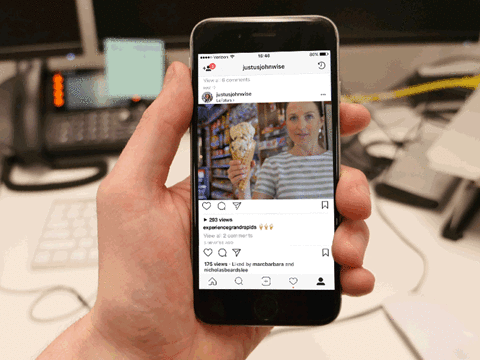
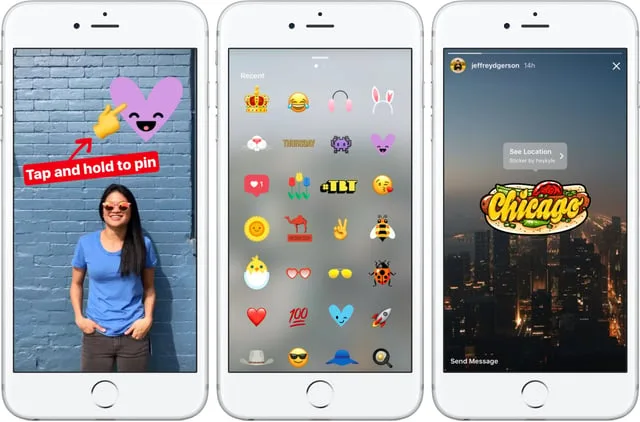
3. Linkedin
Some call it the “Business version of Facebook”. We just call it MANDATORY. Looking to expand your professional network? Need to cut down on unqualified interviews? Maybe you’re just needing to establish yourself as a thought leader in your industry? Linkedin has its own targeting options that set it apart from other platforms. It’s up to you to A/B test your audiences, and serve them the most unique and relevant content possible. Linkedin recently got an upgrade.
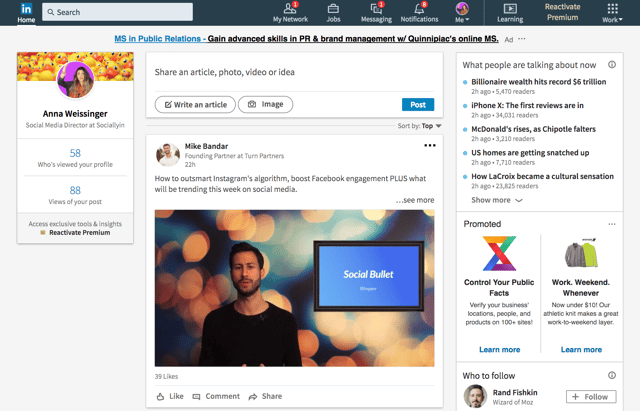
4. Twitter
Let’s talk Twitter Advanced Search. Spy on your competition. Seriously you can run ads to people that follow your competition or brands you feel have a similar type of audience that you want. Get deep into popular hashtags (and the not so popular ones). Jump into every single conversation that mentions the word sleepy/tired and pushes to your energy drink website if that’s your thing. But only AFTER YOU’VE PROVIDED THEM SOME VALUE. Always give your potential customers/fans reasons to trust you, like you, laugh at you, tell others about you FIRST, etc. There is so much to touch on. Start talking and try it out yourself!
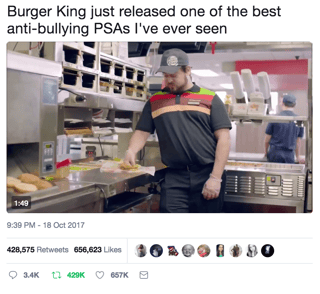
5. Snapchat
How awesome would it be if you could send someone a dope picture that didn’t fill up your storage? With the 2017 version of the “Temporary Post”, deleting pictures isn’t needed here. A calculated approach just like all social channels is mandatory here. Snapchat is home to a much younger demographic compared to others. By no means does that make it a bad destination for your business. Honestly, if that is your target market I could argue that that would be your best choice. Snapchat’s innovation continues to surprise us from Snapchat Spectacles to interactive ads playing basketball with an NBA player. Looking for more Snapchat related content? Your wish is our command!
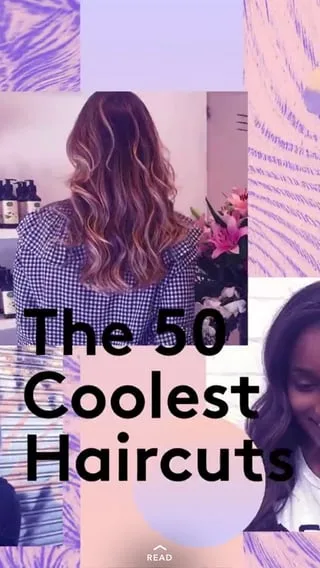
6. Pinterest
Aspirational at his core, Pinterest stands out as a search engine for photos (yes, they have videos & gifs too). Looking to learn how to cook a casserole dish? No, you seem like someone that’s all about that DIY life. A quick 15-minute scroll down an infographic and you’ll have a speaker for your iPhone made out of a paper towel holder and 2 paper cups. BOSS! Pinterest is basically an image search engine. We all know what search engines are good for, DRIVING TRAFFIC. With a mixture of curated and original content. Let’s get these boards up and the PINS pinning.
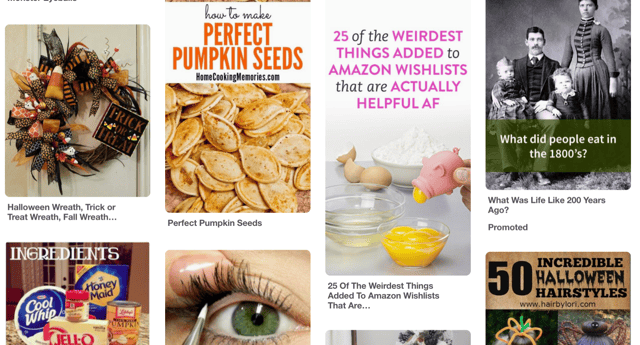
Social Media Content Production: Organic VS Paid Content
They say there are 3 sides to every story. They’re wrong, it’s only actually only 2, Organic and Paid. Organic is the side that we ALL see. Typically these posts are share to the entire following, well part, of a page. We all know someone that first got into social media because “it was free”. No one likes the side of it but those days are no longer, it’s pay to play but it’s so worth it! Just imagine allllllllllllll the information that we share with Facebook, Instagram, Twitter, Linkedin, Snapchat, etc. from pages we like, to our friends, to places we shop, to cities we visit, to our job, birthday, age and more. Now what if I told you could target those people, like really really really target them. For example: Women between the age of 26-34 with a college degree, that enjoy tutorial pages. Check out our blog on increasing traffic through paid advertising to get more info!

Pros and Cons of an In-house Social Media Production Team
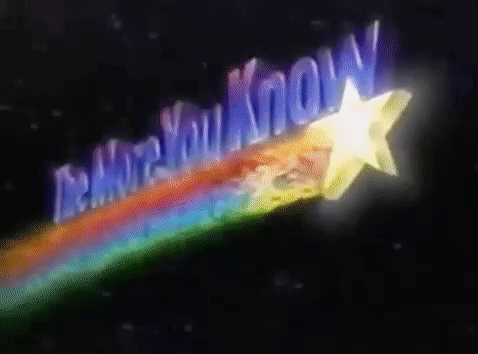
When it comes to social media content production, a lot of brands both large and small, rely on their production team to come up with ideas, produce the ideas, publish them, monitor the results and iterate from there. This can be time consuming for some companies that do not have dedicated production teams. There are 2 ways a brand can produce original content for social media. One, they can build an in-house team that consist of strategist, photographers, videographers, editors, prop managers, and more. Second, they can hire a firm that specializes in producing content for social media at scale.

Each direction has pros and cons. Let’s look at the difference for both routes:
Lets say you decide to hire a team in house. The benefits of that could be easier communication between internal teams and faster turn around time on certain content pieces. There are also benefits of a dedicated team that think about content production as their full time job. With an agency you may only get a certain amount of hours dedicated to the ideation stage. There are also downsides to hiring an internal team, for example, your brand might not have enough content to publish that would require a in-house production team. If thats the case, you may put off producing original content, or give the task to someone who’s training/resources might not make them the best fit to make your company marketable.
The other downside is employee overhead and management. Managing a creative team is no easy task, there are certain processes, deadlines, resources and more that consistently need to be thought of when asking producers to give you social media content. This can become cumbersome over time if you don’t have a solid process in place to manage your team.
If you decide to hire an agency that specializes in content production, that could also has pros and cons. At our agency we help many brands and existing social media teams produce original content at scale, we act as their production powerhouse arm that is not actually in-house. Although it may feel like that is the smoothest process to go, it also has its downsides. For example, hiring a firm to help you with content production could mean that the full team on their end doesn’t completely understand the brand. If the company already has a strategy in place, this makes the production process much more fluid!
We believe the benefits of hiring a firm outweigh the cons for a few reasons. Number one, your does not have to invest in fancy equipment or props that are required for production. The team working on the account is fully immersed in social media trends and what is hot and what is not. The other benefit comes from overhead and cost. If your company does not have a need for full time staff members to produce original content, it may be smarter to commission an agency to give you a bucket of content you can use over time.
As mentioned above, each of the methods have their own pros and cons. We challenge you to write down all the pros and cons from your end that could arise when deciding against a firm or in-house!
Measuring Social Media Content Production ROI

Success rarely comes overnight, yet people still expect instantaneous results from their social media content. Any gains you see are more likely the result of a slow and steady climb in the influence, visibility, credibility, and desirability of your business. In order to successfully measure your social content success it first takes knowing what your business objectives are. What are you trying to achieve? If the content you’re creating aligns with your objectives then you can measure its impact. Retweets, likes, and comments do not mean anything when it comes to business objectives, but sales, revenue and the costs do.
Once you’ve figured out your business objectives and know what to measure for, you have to design your social media content that resonates with your ideal audience or customer. If your content is in line with what you’re trying to achieve, you’re measuring the right metrics, and if it falls in line with your audience, then you can start to measure your social media content. You should see a direct result in customer advocacy around a brand, as well as an increase in metrics and business objective goals. Check out our blog on Mastering Content on a Budget for more tips!
Frequently Asked Questions
That should help get you started on creating content that delivers results! Have a question, comment, or suggestion? Contact me!
Read More Related Article….
Social Media Engagement: What is the REAL Value?
Social Media Content: Answers to Your Most Common Questions


